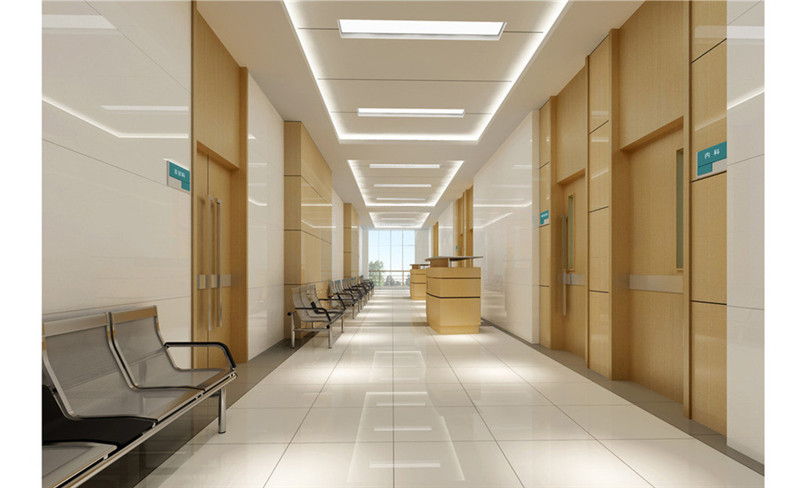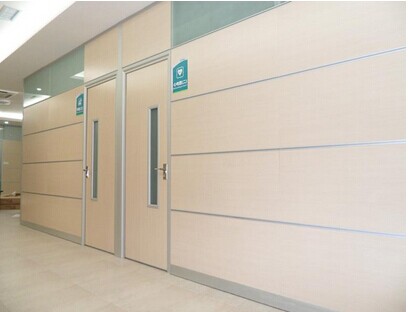In modern hospital design, functionality and safety take center stage. The materials used in such projects must meet stringent standards for hygiene, fire resistance, and environmental sustainability. One of the standout choices for hospital decoration is antibacterial fireproof decorative wall panels, a versatile and innovative solution that has transformed the way healthcare facilities are designed.
This article explores the key reasons why these panels are a favorite among designers and project managers, especially in hospitals where safety, hygiene, and aesthetics are critical.
What Are Antibacterial Fireproof Decorative Panels?
Antibacterial fireproof decorative panels are engineered materials made from a combination of phenolic resin glue, imported kraft paper, and decorative color papers. Manufactured under high temperature and pressure, these panels serve as an eco-friendly alternative to traditional decorative materials such as wood or wallpaper.
Their unique properties, including fire resistance, antibacterial effectiveness, and aesthetic versatility, make them particularly suitable for medical and health facilities, where hygiene and safety standards are paramount.

Key Features of Antibacterial Fireproof Decorative Panels
1. Exceptional Antibacterial Properties
One of the most significant advantages of these panels is their antibacterial effectiveness, achieved through the incorporation of silver ions. Silver ions are well-known for their ability to inhibit the growth of bacteria and other harmful microorganisms, ensuring a clean and sterile environment.
Why Hospitals Need This: Healthcare facilities are high-risk zones for infections, making antibacterial materials essential. Using panels with antibacterial properties helps prevent the spread of pathogens, aligning with strict hygiene protocols.
2. Outstanding Fire Resistance
Safety in hospitals extends beyond hygiene. These panels are fire-resistant, providing crucial protection in case of emergencies.
3. Durable and Long-Lasting
Built to endure the wear and tear of high-traffic environments, these panels are resistant to scratches, moisture, and impacts.
4. Eco-Friendly Composition
Despite being a man-made product, these panels are environmentally friendly, made using recyclable materials and processes that minimize waste and pollution.
5. Aesthetic Versatility
Available in thousands of colors, textures, and finishes, antibacterial fireproof panels offer endless design possibilities. Customization options allow designers to match panels with specific themes or functional requirements, ensuring that hospitals maintain an inviting and modern atmosphere.
Why Are These Panels Ideal for Hospitals?
Hospitals face unique challenges that demand materials capable of addressing hygiene, safety, and durability simultaneously. Below are the main reasons why antibacterial and fireproof wall panels are indispensable in such settings:
1. Infection Control
Hospitals are hotspots for bacteria, viruses, and fungi. Incorporating antibacterial surfaces helps mitigate infection risks, ensuring compliance with health regulations and safeguarding patient well-being.
2. Fire Safety Compliance
Hospitals must adhere to stringent fire safety regulations. The fireproof qualities of these panels enhance overall building safety, particularly in high-risk areas such as laboratories or kitchens.
3. High Durability for Busy Environments
Healthcare facilities are among the busiest public spaces, with constant foot traffic, equipment movement, and cleaning activities. The robust construction of these panels makes them resistant to physical damage, ensuring they retain their appearance and functionality for years.
4. Easy Maintenance
Hygiene protocols in hospitals require materials that are easy to clean and maintain. These panels resist stains and moisture, allowing for quick and effective cleaning with standard disinfectants.

Applications Beyond Hospitals
While hospitals are the primary users, the versatility of antibacterial fireproof panels has made them popular in other high-traffic and sensitive environments, such as:
Schools: Ensuring hygienic and safe learning spaces.
Hotels: Combining durability with aesthetic appeal for long-term use.
Factories: Withstanding industrial wear and tear.
Public Spaces: Offering fire resistance and easy maintenance in areas with heavy foot traffic.
Aesthetic and Functional Design Trends
1. Customization
Modern hospital designs emphasize personalization. Designers can choose from a wide range of colors, patterns, and textures to create interiors that reflect a healthcare facility’s branding and ambiance.
2. Integration with Advanced Building Systems
These panels can be integrated with smart technologies, such as embedded sensors for real-time monitoring of surface cleanliness or fire hazards.
Conclusion
Antibacterial and fireproof decorative wall panels are a revolutionary choice for hospital decoration projects, seamlessly blending hygiene, safety, and design flexibility. Their unparalleled antibacterial properties, fire resistance, and eco-friendly composition make them an irreplaceable material in modern healthcare environments.
By addressing the unique challenges of hospital settings, these panels not only enhance functionality but also contribute to creating spaces that are safer, cleaner, and more aesthetically pleasing. As technology advances and design standards rise, these panels will continue to play a vital role in the evolution of healthcare facilities.
English
Русский
العربية
Français
Español
Português
Deutsch
italiano
日本語
한국어
Nederlands
Tiếng Việt
ไทย
Polski
Türkçe
አማርኛ
Bahasa Melayu
தமிழ்
Filipino
Bahasa Indonesia
magyar
Română
Монгол
қазақ
Српски
हिन्दी
فارسی
Kiswahili
Slovenčina
Slovenščina
Svenska
українська
Ελληνικά
Suomi
Հայերեն
עברית
اردو
Shqip
বাংলা
Hrvatski
Afrikaans
Māori
සිංහල
Oʻzbekcha
latviešu
Беларуская мова
Bosanski
Български
ქართული
Lietuvių
Malti
Runasimi




